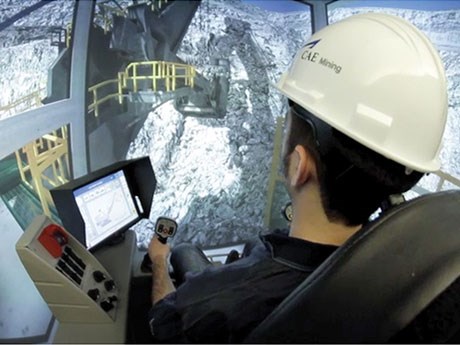Vale, Glencore, KGHM pitch in
A collaborative partnership between the Ontario government, Vale, KGHM International, Sudbury Integrated Nickel Operations (Glencore), and Laurentian University’s Centre for Research in Occupational Safety and Health (CROSH), is preparing to open a new mining simulator training centre at the Northern Centre for Advanced Technology (NORCAT) in Sudbury.
The new training centre will support the mining industry in Northern Ontario with an innovative and userfriendly technology that improves safety and enhances productivity.
The idea arose from discussion at a NORCAThosted health and safety council comprised of mining companies and contractors.
The council identified that a mining simulator would contribute considerably to the training needs of the industry.
“Vale is excited to partner with NORCAT, Sudbury Integrated Nickel Operations (Glencore), and KGHM International on this stateof-the-art project,” said Kelly Strong, vice-president of Vale’s Ontario Operations. “We applaud NORCAT’s commitment, and the commitment of the Ontario government to invest in this proven training technology. This brings NORCAT to a whole new level of excellence to serve the Canadian mining industry by ensuring workers are effectively trained to work as safely as possible.”
Training simulators are widely used in other industries. Aviation and healthcare are two industries that have taken advantage of training workers on dangerous tasks with equipment that simulates the real thing.
Mining companies are using simulators to train workers both in Canada and Africa.
“Adding a mining simulator to our already existing training programs turns us into a world class training centre and takes us to the next level of excellence,” said Duval.
Introducing a mining simulator to a program that trains and tests a worker before they jump onto an expensive and potentially dangerous piece of equipment improves outcomes significantly.
NORCAT received $1 million from the Northern Ontario Heritage Fund Corporation along with contributions from the partnering mining companies.
The funding allows NORCAT to purchase a mining simulator that can replicate equipment used and scenarios experienced in Northern Ontario. They are currently looking at available options.
Duval describes the simulator as a 360-degree pod where trainees will feel like they are in the seat of a haul truck with video monitors surrounding them.
“The hardware will look and feel just like the real thing, and will provide the ability to train for different simulation scenarios. This will also allow researchers to determine how quickly trainees react, and how they become more proficient,” said Duvall.
Dr. Tammy Eger, director of CROSH, said there has been success with simulators used in the aviation and medical fields, as well as in mining.
CROSH has a research interest.
“We want to ask how people benefit from initial simulator training and be able to make modifications to the training program based on those results,” said Eger.
The research will help to understand how workers learn, what the common on-the-job challenges are and, ultimately, how to translate these learnings into useful insight to make incremental improvements in curriculum and course design that will result in better training outcomes.
Duval wants to offer more than a training package. He wants to quantify and demonstrate through outcomes the best pedagogical approach to training.
“We recognize that people learn in different ways and we want to adjust the training to achieve better safety and productivity,” he said.
The simulator training does not replace the in-person or peer mentorship that is important to the learning experience. However, it complements it by providing a controlled and safe way to practice operating large and expensive equipment in challenging environments.
The simulator will also help workers who are returning to work after an absence due to injury, allowing them to test their skill before operating heavy equipment, and take refresher training if necessary.
For new workers, it complements the initial training they will undertake before operating equipment.
Simulator training can reduce the amount of time equipment is taken out of production for training purposes.
It can also cut down on accidents and injuries that occur when inexperienced trainees are first introduced to driving a haul truck up and down a ramp in a real mine.
Duval expects the simulation training centre to begin accepting students this summer.



